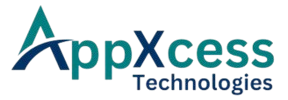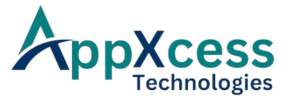In today’s rapidly evolving healthcare environment, operational efficiency is essential to delivering high-quality care while controlling costs. As patient demands grow and healthcare systems become increasingly complex, streamlining operations has become a priority for healthcare providers. From automating administrative tasks to optimizing patient flow, healthcare organizations are leveraging innovative technologies to improve processes, reduce inefficiencies, and enhance the patient experience. By focusing on streamlining operations, healthcare providers can create a more effective and sustainable system that benefits both patients and staff.
1. Implementing Electronic Health Records (EHR) Systems
One of the most significant steps healthcare providers can take toward streamlining operations is the adoption of Electronic Health Records (EHR) systems. EHRs allow healthcare professionals to store and access patient information digitally, eliminating the need for paper records. This leads to faster and more accurate data retrieval, reduces errors associated with handwritten notes, and improves communication across departments.
EHRs can also integrate with other systems, such as billing and scheduling, providing a unified platform that streamlines administrative processes. By centralizing patient information, EHRs not only improve operational efficiency but also enhance the quality of care, as healthcare providers have immediate access to complete patient histories and test results.
2. Automating Administrative Tasks
Administrative tasks such as scheduling appointments, billing, and insurance verification can be time-consuming and prone to human error. Automation is transforming these processes by reducing manual labor and improving accuracy. Scheduling software, for example, can automatically manage appointments, send reminders to patients, and even reschedule appointments based on availability.
Similarly, automated billing systems help streamline the revenue cycle by speeding up the invoicing process, reducing errors, and ensuring that claims are processed efficiently. By freeing up administrative staff from repetitive tasks, automation allows them to focus on more strategic activities, improving the overall efficiency of healthcare operations.
3. Optimizing Patient Flow and Workflow Management
Streamlining patient flow is a critical aspect of improving healthcare operations. Efficient patient flow ensures that patients are seen in a timely manner, reducing wait times and improving satisfaction. Healthcare providers are increasingly using data analytics and workflow management tools to optimize patient flow throughout the entire care process, from check-in to discharge.
Advanced scheduling systems help healthcare facilities manage appointment volumes and ensure that staff is appropriately allocated. Additionally, real-time location systems (RTLS) are being used to track patient movement and optimize the use of hospital resources. These systems allow providers to identify bottlenecks in the workflow, such as long wait times in the emergency room or delays in diagnostic testing, and take corrective actions to improve efficiency.
4. Enhancing Communication with Digital Tools
Effective communication is essential for streamlined operations in healthcare, where multiple departments, teams, and systems need to coordinate seamlessly. Digital communication tools, such as secure messaging platforms and telemedicine solutions, are helping healthcare organizations improve collaboration between staff and enhance patient communication.
For example, secure messaging apps allow doctors, nurses, and administrative staff to communicate in real-time about patient care, reducing delays in decision-making and improving the speed of treatment. Telemedicine platforms, on the other hand, allow for remote consultations, reducing the burden on in-person visits and optimizing the use of healthcare resources.
5. Data Analytics for Decision-Making
Healthcare organizations are increasingly relying on data analytics to drive decision-making and improve operational efficiency. By analyzing large datasets, hospitals and clinics can identify trends, track performance metrics, and pinpoint areas where resources are being underutilized or overburdened.
For example, predictive analytics can help healthcare providers anticipate patient demand, ensuring that staffing levels and resources are optimized. By leveraging data to make informed decisions, healthcare organizations can reduce inefficiencies, improve patient outcomes, and reduce costs. Analytics also enables continuous monitoring and improvement, helping healthcare providers stay agile and responsive to changing needs.
6. Streamlining Inventory Management
Effective inventory management is crucial for maintaining a smooth operation in healthcare facilities. Hospitals and clinics require a wide range of medical supplies, from pharmaceuticals to surgical instruments, and managing these resources efficiently is key to reducing waste and preventing shortages.
Healthcare providers are turning to inventory management systems that use RFID tags and barcode scanning to track supplies in real-time. These systems allow for automated reordering, reduce the risk of stockouts, and ensure that inventory is always available when needed. By streamlining inventory management, healthcare organizations can minimize costs, improve patient care, and ensure that staff have the tools they need to provide the best possible service.
7. Enhancing Patient Engagement and Satisfaction
Streamlining operations is not only about improving efficiency behind the scenes—it’s also about enhancing the patient experience. Patient engagement is a key focus for healthcare providers, and streamlined operations can improve how patients interact with healthcare services. Digital tools, such as patient portals, online appointment scheduling, and automated reminders, are empowering patients to take control of their care.
Patient portals allow individuals to access their medical records, schedule appointments, and communicate with healthcare providers from the comfort of their homes. These tools help improve patient satisfaction by offering convenience, reducing wait times, and ensuring that patients are more actively involved in their healthcare journey.
8. Integrating Artificial Intelligence for Process Automation
Artificial intelligence (AI) is increasingly being used to automate complex processes in healthcare. AI applications can assist in tasks such as diagnosing medical conditions, analyzing imaging data, and even predicting patient outcomes. By automating these tasks, healthcare providers can not only save time but also improve the accuracy of their diagnoses and treatments.
AI-powered tools are also being used for administrative tasks like claims processing, appointment scheduling, and customer support. By automating repetitive and time-consuming processes, AI allows healthcare professionals to focus on more critical aspects of care, improving both operational efficiency and patient outcomes.
Conclusion
Streamlining healthcare operations is crucial for improving efficiency, reducing costs, and enhancing the overall patient experience. By adopting technologies such as EHR systems, automation, AI, and data analytics, healthcare organizations can optimize workflows, improve communication, and ensure that resources are used effectively. The healthcare industry is embracing innovation, and those who implement these technologies are better positioned to deliver high-quality care and meet the evolving demands of patients and the healthcare system.
At AppXcess Technologies, we are committed to helping healthcare organizations streamline their operations and improve patient care. Our solutions are designed to enhance operational efficiency, optimize workflows, and deliver better outcomes for patients and providers alike.
© AppXcess Technologies 2025. All Rights Reserved.

